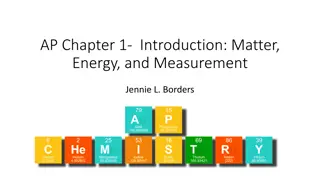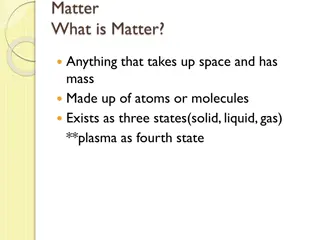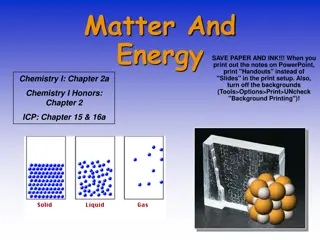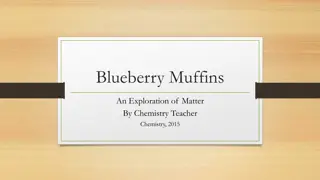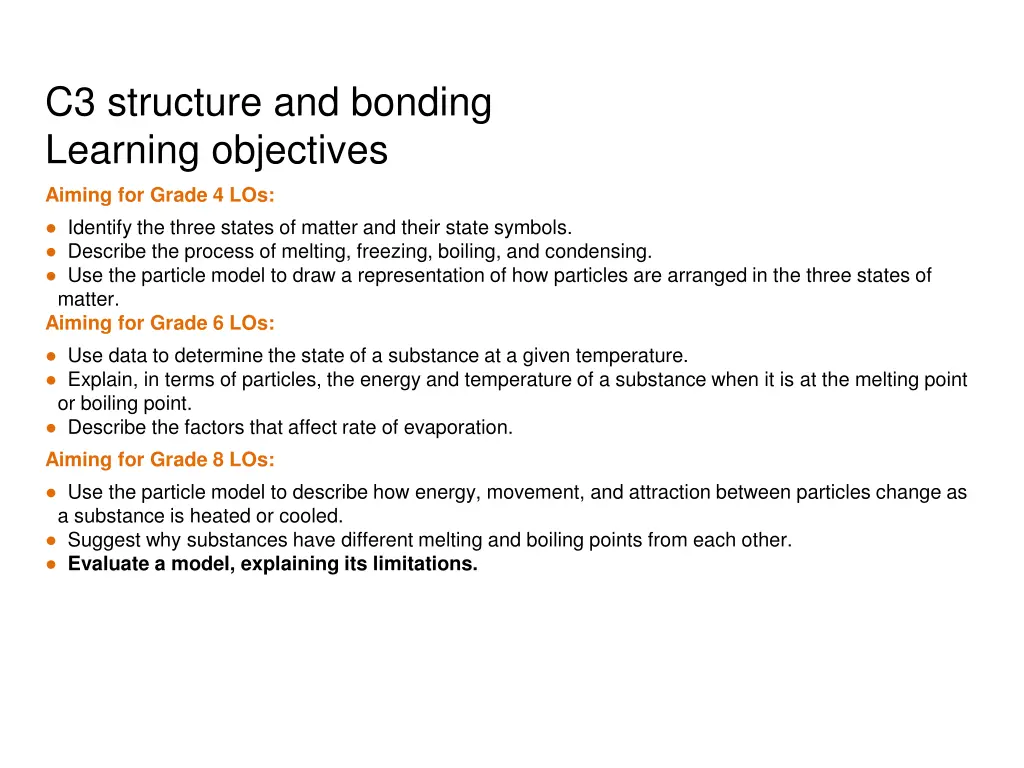
Understanding States of Matter and Particle Arrangement
Explore the states of matter, particle arrangement, and properties of solids, liquids, and gases. Learn about the behavior of particles in different states and the factors that affect them.
Download Presentation

Please find below an Image/Link to download the presentation.
The content on the website is provided AS IS for your information and personal use only. It may not be sold, licensed, or shared on other websites without obtaining consent from the author. If you encounter any issues during the download, it is possible that the publisher has removed the file from their server.
You are allowed to download the files provided on this website for personal or commercial use, subject to the condition that they are used lawfully. All files are the property of their respective owners.
The content on the website is provided AS IS for your information and personal use only. It may not be sold, licensed, or shared on other websites without obtaining consent from the author.
E N D
Presentation Transcript
C3 structure and bonding Learning objectives Aiming for Grade 4 LOs: Identify the three states of matter and their state symbols. Describe the process of melting, freezing, boiling, and condensing. Use the particle model to draw a representation of how particles are arranged in the three states of matter. Aiming for Grade 6 LOs: Use data to determine the state of a substance at a given temperature. Explain, in terms of particles, the energy and temperature of a substance when it is at the melting point or boiling point. Describe the factors that affect rate of evaporation. Aiming for Grade 8 LOs: Use the particle model to describe how energy, movement, and attraction between particles change as a substance is heated or cooled. Suggest why substances have different melting and boiling points from each other. Evaluate a model, explaining its limitations.
States of Matter Copy and complete particle diagrams: Solid Liquid Gas What properties do solid substances have? Why and how are the properties of liquids and gasses different?
States of Matter Copy and complete particle diagrams: Solid Liquid Gas What properties do solid substances have? Why and how are the properties of liquids and gasses different?
Solids Atoms are fixed in a regular arrangement and vibrate more when they are heated. Have lots of bonds between atoms. Maintain their shape. Are incompressible.
Liquids Atoms are still close together Less bonds holding the atoms together so they can slide past each other easily. Liquids flow and fill the bottom of the container they are in. Liquids can not be compressed. The atoms/molecules move randomly and increase speed when heated
Gases Atoms/molecules move rapidly in random directions. Atoms/ molecules have enough energy to completely overcome the bonds between them. Atoms/molecules move randomly and rapidly to fill any available space When heated the atoms/molecules move faster.
H Stearic Acid (l) (s) This is not a chemical reaction. Why? What is it? What must be happening to the molecule? How many carbon atoms are there in the molecule? How many elements do we need to make stearic acid? Bonus questions: What do the lines represent? Clue:
Experiment - Stearic Acid cooling Equipment: Test tube rack. Boiling tube containing acid & thermometer. Boiling tube containing water & thermometer. Timer. Method: Measure the temperature of the acid and the water. Remove the boiling tubes and start the timer. Record the temperatures every minute for 20 mins in a table. Plot a graph (two lines) showing temperature (y axis) against time (x axis). Did you get any errors/anomalies? Describe the shape of the graphs. Use particle theory and energy to explain the shape of the graphs.
Describing a graph What is the overall trend (include numbers) Describe how the gradient changes
Does your acid graph look like this? Why does the gradient reduce as time increases? What is happening when the acid graph is flat? Why doesn t the water graph have a flat part? What are being made during this period?
If we put water in a freezer would we get a similar shape curve? Why would the values for the dependent variable be different? How could we use the particle models we reviewed at the beginning to explain the difference?

